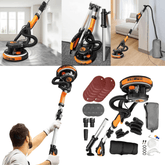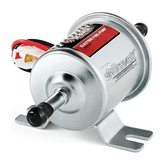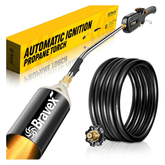10 Must-Read Drywall Sanding Tips and Tricks
Drywall sanding is a critical step if you want your walls to look smooth and flawless. But have you ever wondered how to make drywall sanding a breeze? Whether you're a pro contractor or just getting started with DIY projects, having some effective drywall sanding techniques is a must. In this article, we've got 10 awesome tips on sanding drywall to share with you that will help you achieve professional-looking drywall surfaces. We'll cover everything from the tools you'll need to the best sanding techniques and even some common mistakes to avoid.

Tip 1: Gather the Necessary Tools
Before you start sanding your drywall, make sure you have all the necessary tools. Here's what you'll need:
- Sanding block, sanding pole for better control and reach, or electric drywall sander for higher efficiency.
- Sandpaper with various grits, starting from coarse (around 80 or 100) for initial sanding and progressing to finer grits (such as 120 or 150) for a smoother finish.
- Dust mask to protect yourself from inhaling dust particles.
- Safety goggles to safeguard your eyes during the sanding process.
- Drop cloth or plastic sheeting to cover the floor and furniture, preventing dust and debris from spreading.
Tip 2: Prepare the Workspace
Before you start sanding, it's super important to get your workspace ready. Just follow these simple steps:
- Clear the room: Remove any furniture or objects that may hinder your access to the walls.
- Cover surfaces: Lay down a drop cloth or plastic sheeting to protect the floor and furniture from dust and debris.
- Seal off vents and openings: Close vents or any other openings in the room to prevent dust from spreading to other areas.
Tip 3: Clean the Drywall Surface
Ensure that the drywall surface is clean and free from loose debris or dust before you begin sanding. Use a soft brush or a vacuum cleaner to remove any particles. This step will help prevent scratches and prolong the life of your sandpaper.
Tip 4: Choose the Right Sandpaper Grit
Picking the right sandpaper grit is key to getting the desired results. Here's a guideline:
- Start with coarser grit (around 80 or 100) for initial sanding to remove high spots, ridges, or joint compounds.
- As you progress, switch to finer grits (such as 120, 150, or 180) to smoothing the surface gradually.
- Remember to change the sandpaper regularly to maintain its effectiveness.
For more information about choosing the right sandpaper grit, check out the article What Sandpaper Grit for Drywall.
Tip 5: Use Proper Sanding Techniques
Want a smooth and even surface? Try out these sanding techniques:
- Feathering: When sanding the joint compound, gradually extend the sanding area beyond the compound edges to create a seamless transition between the compound and the drywall surface.
- Feathering: When sanding joint compound, gradually extend the sanding area beyond the compound edges to create a seamless transition between the compound and the drywall surface.
- Apply light pressure: Use gentle and even pressure while sanding to avoid creating gouges or depressions in the drywall.
- Make multiple passes: Instead of using excessive force in a single pass, make several light passes to ensure even sanding and prevent damage to the drywall.
Tip 6: Deal with Uneven Surfaces and Joint Compounds
If you encounter uneven surfaces or joint compounds, here are some tips to address them:
- Use sanding blocks with rounded edges to prevent digging into the joint compound or drywall, especially in corners or tight areas.
- Apply additional layers of joint compound if necessary, and feather them out gradually to create a smooth surface for sanding.
Tip 7: Avoid Common Mistakes
If you want to get a professional finish, it's crucial to avoid common sanding mistakes. Here are a few to keep in mind:
- Don't over-sand an area, as it may lead to visible depressions or damage to the drywall.
- Regularly clean the sanding dust to prevent it from clogging the sandpaper and affecting its performance.
- Don't skip grits of sandpaper, as it may result in visible sanding marks. Instead, you should gradually progress from coarse to finer grits for a smoother surface.
Tip 8: Dust Control during Sanding
Keeping dust under control is a big deal for a clean and healthy workspace. Here are some things you can do to minimize dust:
- Wear a properly fitting dust mask to protect yourself from inhaling fine dust particles.
- Wet sanding can help control dust particles. Spray a fine mist of water onto the sandpaper or the surface being sanded before starting. (What's the difference between wet sanding and dry sanding? Here the post Wet Sanding vs Dry Sanding can help you answer all the questions.)
- Use a dustless drywall sander with vacuum attachment such as Bravex 6.5-Amp Electric Drywall Sander 7 Variable Speed Floor Sander For Ceiling Wood Floor.
Tip 9: Finishing Touches and Preparing for Painting
After sanding, it's time to prepare the drywall surface for painting or applying wallpaper. Follow these steps for a flawless finish:
- Wipe the walls with a clean, damp cloth to remove any dust or residue from the sanding process.
- Apply a coat of primer to seal the surface and create an even base for paint or wallpaper.
- Inspect the walls for any imperfections that may require further sanding or joint compound application.
Tip 10: Use an Electric Drywall Sander for Efficient & Fast Sanding
Want to take your sanding game to the next level? Consider using an electric drywall sander. Electric sanders can save you time and effort compared to manual sanding methods, particularly when dealing with larger areas or extensive projects.
When selecting an electric drywall sander, one option worth considering is the Bravex electric drywall sander. This powerful tool offers several advantages, including but not limited to:
- Faster sanding: The 800W powerful electric motor enables quicker sanding, helping you complete your projects more efficiently.
- Dust collection: Bravex drywall sander features an unique patented design of dust-proof structure and high-powered dust suction system that removes 99% of the airborne dust, truly allowing you to sand drywall without any dust.
- Variable speed for customized setting: There are 6 variable speeds, ranging from 500-1800RPM. This allows you to customize the sanding effect based on your specific requirements. Whether you need a gentle touch or a more aggressive sanding action, you can easily optimize the speed to suit your needs.
- Easy to sand ceilings and corners: It's designed to tackle drywall corners or ceilings effortlessly, no matter what position you are working in. Thanks to the built-in extension, you can easily adjust the length of the tool from 4.6ft to 6.3ft, enabling you to reach heights of up to 12ft. Plus, with the integrated lighting system, you'll have clear visibility of all the variations on the surface you are sanding.

To Sum Up
Achieving a smooth and well-prepared surface for painting or wallpapering requires proper drywall sanding techniques. By following the tips outlined in this article, using the right tools and sandpaper grits, and ensuring dust control, you can achieve professional results. Remember to take your time, be patient, and pay attention to detail throughout the sanding process. With practice and these tips, you'll be able to transform your drywall surfaces into beautiful, seamless finishes.








Leave a comment
Please note, comments need to be approved before they are published.